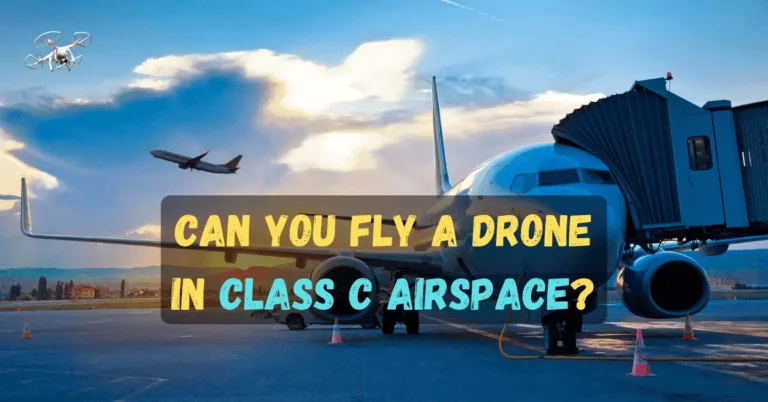Can You Fly a Drone in a Wildlife Management Area?

So many wildlife management areas have unique landscapes and places more beautiful than the rest. The thing is, these places are only for wildlife. Human beings are not allowed to make changes to these places. What about drones?
Can you fly a drone in a wildlife management area?
Flying a drone in a wildlife management area is prohibited according to federal law. The Wilderness Act of 1964 and the National Wilderness Preservation System forbids using mechanized equipment, including drones, in designated wilderness areas.
In this article, I will answer the most critical questions related to wildlife management areas, like whether you can fly your drone there in any way or how you can find wildlife management areas. So let’s begin all you need to do is keep reading.
What area is called wildlife management?
Wildlife Management Area (W.M.A.) is a protected area established for wildlife conservation and recreational activities involving wildlife.
These areas are typically managed by state or federal agencies, such as the Florida Fish and Wildlife Conservation Commission or the U.S. Fish and Wildlife Service. W.M.A. aims to protect habitats and wildlife populations in unique ecological regions.
W.M.A.s are often privately owned lands on which perpetual conservation easements have been placed.
These easements ensure that the land will be used for conservation purposes in perpetuity, even if the land is sold or transferred to a new owner.
W.M.A.s may offer limited public recreation opportunities but often need more amenities like trails, campsites, and visitor centers.

How to find a wildlife management area?
If you are a drone pilot, you must keep yourself safe from the drone regulating authorities, which is why you must know about wildlife management areas. If you go to that place and start flying your drone, you will be in great trouble.
If you are a drone pilot, you will know that a drone flying app like the B4Ufly app has a map that tells you everything about your surroundings. So you can easily recognize what and where is the wildlife management area.
On the other hand, you can also check for signs when you will enter the territory of the wildlife management area. You will see the boards that can tell you that you are entering a specific wildlife management area.
Finding a wildlife management area can be done through various online resources that provide listings by state.
It is essential for drone pilots to research and identifies these areas to avoid flying their drones there, as it is often prohibited by law to fly drones in these areas.
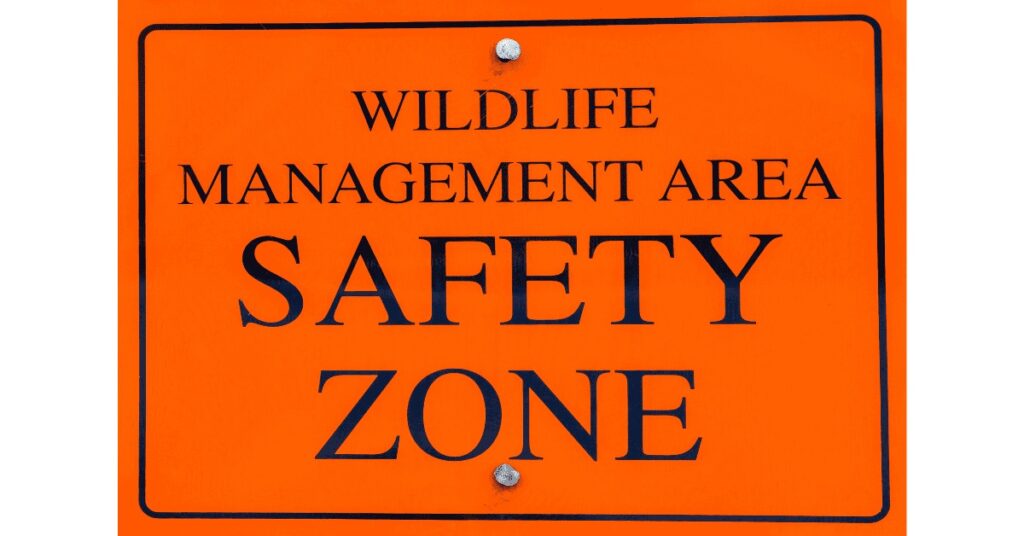
Drone flight planning apps can also be used to check for no-fly zones in public lands and to ensure compliance with regulations.
Drone pilots can avoid endangering wildlife and facing legal consequences by staying informed and following rules.
Read More: https://skbestgadgets.com/can-you-bring-a-drone-to-the-bahamas/
What are the wildlife management areas in the U.S.A.?
Many wildlife management areas are in the U.S.A., but the most famous ones are below.
- Blackwater National Wildlife Refuge, Maryland
- Bombay Hook National Wildlife Refuge, Delaware
- Cherry Valley National Wildlife Refuge, Pennsylvania
- Don Edwards San Francisco Bay National Wildlife Refuge, California
- Hagerman National Wildlife Refuge, Texas

- Huron-Manistee National Forests, Michigan
- Lower Suwannee National Wildlife Refuge, Florida
- Moosehorn National Wildlife Refuge, Maine
- Okefenokee National Wildlife Refuge, Georgia
- Quivira National Wildlife Refuge, Kansas
- Red Rock Lakes National Wildlife Refuge, Montana
- Sherburne National Wildlife Refuge, Minnesota
- Tensas River National Wildlife Refuge, Louisiana
- Upper Mississippi River National Wildlife and Fish Refuge, Illinois, Iowa, Minnesota, and Wisconsin
- Wapanocca National Wildlife Refuge, Arkansas

There are plenty of other wildlife management places. If I started writing them, the list would go on; however, various online resources provide listings of wildlife management areas by state.
Some examples include the websites of state fish and wildlife agencies and national organizations such as the U.S. Fish and Wildlife Service and The Wildlife Society.
Additionally, drone flight planning apps may indicate areas where drone flight is restricted, including wildlife management areas.
What are some other wildlife areas in the world?
There are so many famous wildlife management areas in the world. Below are some of the famous ones. You can check them out.
- Serengeti National Park, Tanzania: Known for its annual wildebeest migration, this park is home to many species, including lions, cheetahs, and elephants.

- Maasai Mara National Reserve, Kenya: Located in the Great Rift Valley, this reserve is home to the largest population of lions in Kenya, as well as other iconic species like elephants, leopards, and Cape buffalos.
- Kruger National Park, South Africa: Covering an area of over 7,500 square miles, this park is home to the famous “Big Five” (lions, leopards, rhinos, elephants, and Cape buffalos), as well as many other species.
- Galapagos Islands, Ecuador: This remote archipelago is home to unique species found nowhere else on Earth, including the Galapagos tortoise and marine iguana.
- Great Barrier Reef, Australia: This underwater ecosystem is home to an incredible variety of marine life, including over 1,500 species of fish and over 400 types of coral.
- Amazon Rainforest, Brazil: One of the most biodiverse regions in the world, the Amazon rainforest is home to countless species of plants, animals, and insects.

- Yellowstone National Park, U.S.A.: Although located in the U.S., Yellowstone is worth mentioning due to its importance as the world’s first national park, established in 1872. It is home to many species, including wolves, grizzly bears, and bison.
- Masoala National Park, Madagascar: This park is home to some of Madagascar’s most iconic species, including lemurs, chameleons, and many species of birds.
- Okavango Delta, Botswana: This unique ecosystem is created by the seasonal flooding of the Okavango River and is home to a variety of species, including lions, leopards, and hippos.
- Sundarbans National Park, India, and Bangladesh: This mangrove forest is home to the endangered Bengal tiger and many other species like saltwater crocodiles and Indian rhinoceroses.
These are just a few examples of the many important wildlife management areas worldwide that play a critical role in conserving biodiversity and protecting endangered species.
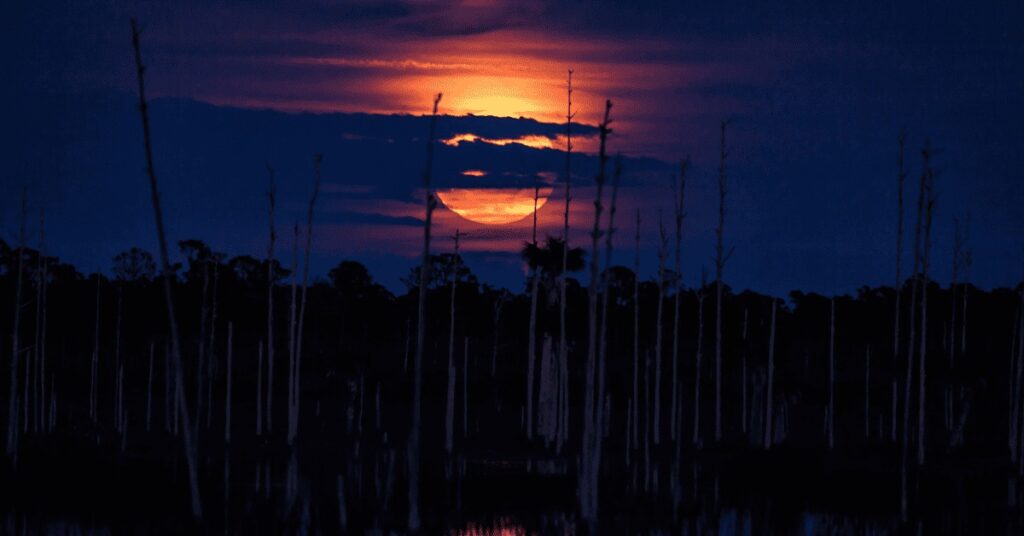
Can you fly a drone in wildlife management areas?
Wildlife Management Areas are federally protected areas, and flying drones in these areas is prohibited under the Wilderness Act of 1964 rules.
This law prohibits using mechanized equipment, including drones, from launching, landing, or operating in designated wilderness areas. Violating this law can result in prosecution under federal law.
READ MORE: Drone laws in Nicaragua
Moreover, flying a drone near wildlife can cause stress, harm, or death.
It is recommended to launch drones more than 100 meters away from wildlife and avoid flying directly at them or hovering in front of them to get a close shot.
It is crucial to give wildlife space, especially during breeding and nesting seasons, and not bait them to a specific area to capture footage.

Will you get arrested while flying a drone in a wildlife management area?
If you get caught flying a drone in a Wildlife Management Area, you will break federal law, as these areas are federally protected. This prohibition is according to the rules of the Wilderness Act of 1964.
States enforce these laws, and violating them can result in penalties ranging from $70 to as steep as $125,000. If drone uses leads to animal harassment, then it would be an illegal possession of that animal, and you could face a fine of up to $125,000.
Additionally, the second offense of violating drone law becomes a felony, with a maximum penalty of two years in prison and a fine of $250,000 for an individual or $500,000 for an organization.
The act also provides a maximum civil liability of $5,000 for each violation.
Therefore, it is essential to be aware of the rules and regulations when flying a drone, particularly in federally protected areas, and to ensure that your drone does not disrupt wildlife or cause harm.

It is recommended to use small drones equipped with propeller guards if you must fly your drone near animals and to fly out immediately if nearby animals start exhibiting aggressive behavior.
Can you fly a drone in the boundary waters?
You cannot fly a drone in the Boundary Waters Canoe Area Wilderness (BWCAW). According to a source, drone operation is prohibited in the BWCA Wilderness, including the Superior National Forest, which encompasses the BWCAW.
This restriction applies to all recreational unmanned aerial systems. The Forest Service wants the public to understand that federal penalties exist for the illegal use of drones in the area.
It is important to note that even in uncontrolled airspace, drone laws set restrictions on both recreational and professional operators in the U.S. These restrictions include flying less than 400 feet above ground level and in daylight.

Additionally, waves can be dangerous when flying too close to the water’s surface, requiring pilots to stay far enough above the surface to avoid this issue entirely.
Furthermore, the Federal Aviation Administration (F.A.A.) has jurisdiction over the airspace in the U.S. Still, by international treaty, it agrees to be the enforcing body for Americans operating US-registered aircraft in international waters.
However, a source notes that the F.A.A.’s regulations probably stop applying at three nautical miles, but this is more about maritime law than aviation regulations.
Can you fly drones in the countryside?
Yes, you can fly a drone in the countryside, but some rules and regulations must be followed to ensure safety and compliance with the law.
Flying your drone in large municipal parks is recommended, but checking the area’s bylaws before flying is essential.

National parks, such as Dartmoor, have bylaws banning the use of drones on common land within the park, and permission from the landowner is required when flying over farmland.
When flying a drone, it is essential to keep it in direct line of sight and avoid flying higher than 120m above the ground. Flying closer than 50m to people, buildings, and cars is also prohibited, except for drones weighing less than 250g or are C0 class.
Rules governing the use of drones have been harmonized across the entire E.U.U., including the U.K.K., with the distinction between commercial and non-commercial use being abolished.
READ MORE: Can you fly a drone in Destin Florida?
Before flying your drone in the countryside, it is recommended to register it with the F.A.A. and check for any local restrictions or no-fly zones, such as national parks, stadiums, and raceways.
It is also important to use apps like B4UFLY to check for airspace restrictions and to follow the F.A.A.’s guidelines for safe and responsible drone operation.
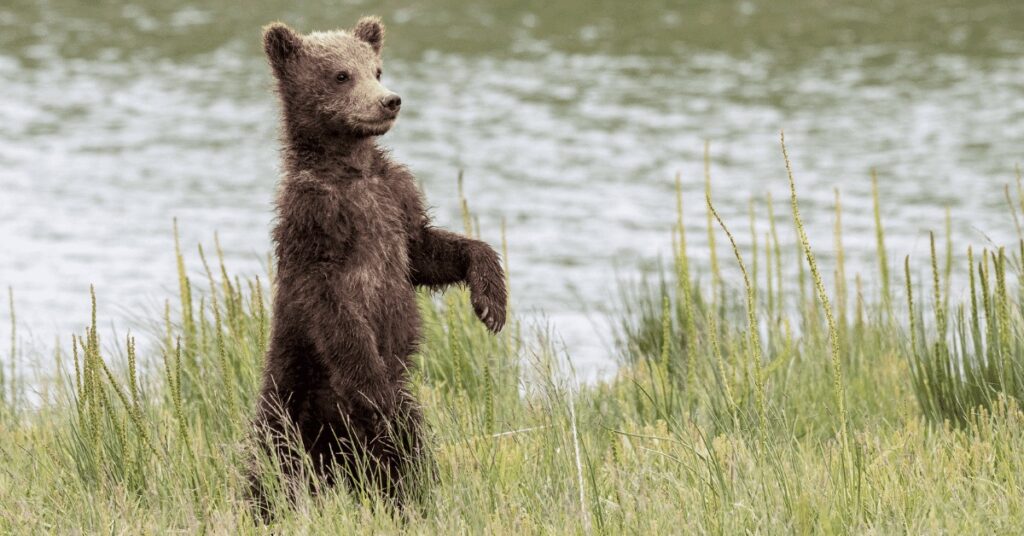
Flying a drone can be a fun and exciting experience, but it is essential to do so responsibly to avoid any potential harm or disruption.
How are drones used in wildlife monitoring?
Drones are increasingly being used in wildlife monitoring to study, protect and conserve animals from harm. They are more accurate at counting species and can record vast amounts of data quicker than a person could.
With the help of drones, scientists and researchers can carry out censuses, observe and track migration routes or patterns, and monitor population trends over time.
In addition, drones can capture images from a bird’s-eye view, giving them the edge over traditional field research.
One of the most common ways people use drones for wildlife conservation is to monitor wildlife populations. Drones with unique cameras can snap pictures of wildlife herds and track their movements.

These photos and videos can then be used for various reasons, including estimating the health of fragile polar mosses, measuring and predicting the mass of animals, and even discovering new animal species.
In addition, drones equipped with thermal and long-distance focal-point cameras are highly effective for monitoring wildlife during the day and night.
They can also be used to examine the health status of the animals, detect animal tracks, and locate animals in their natural habitats.
However, it is essential to be aware of local and national rules and laws when using drones for wildlife monitoring to minimize disturbance to wildlife and ensure ethical and legal drone use.
Do drones scare animals?
Yes, drones can scare animals, and it is recommended to avoid flying drones near them, especially in areas where endangered species or ecologically sensitive habitats are involved.
Drones flying too close to animals can cause collisions, attacks, and even death.
Moreover, not all animals react to drones similarly, and some may be more vulnerable to drone presence, such as those that fly or have evolved to fear aerial predators.
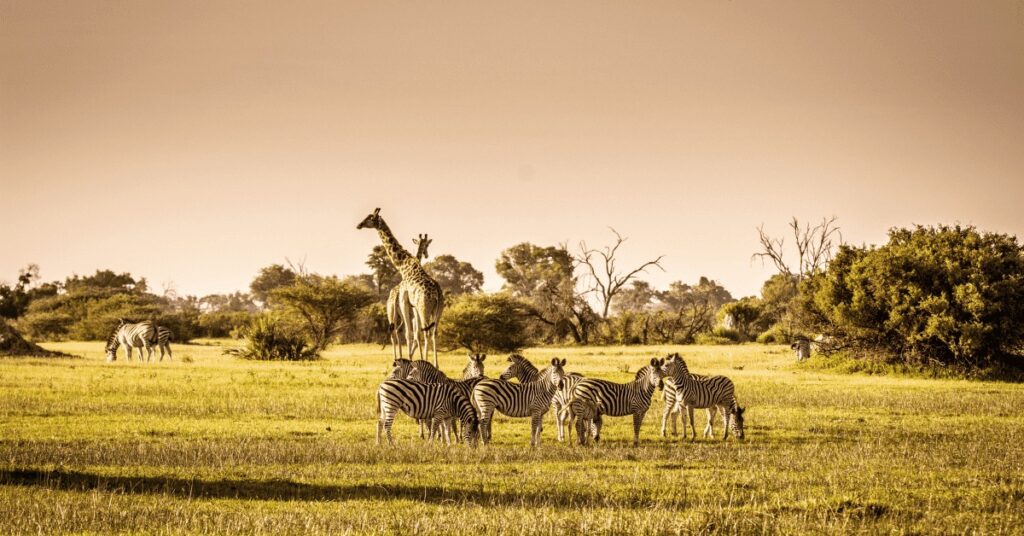
It is essential to exercise caution when using drones around wildlife. Ideally, experienced pilots should fly near wildlife to minimize the risk of disturbance.
Drones equipped with low noise production and size and propeller guards are less noticeable, disruptive, and less likely to cause injury.
A minimum distance of 50 feet is recommended when flying drones near birds and animals, but 100 feet is ideal. The drone should be flown out immediately if nearby animals exhibit aggressive behavior.
In many countries, using drones near endangered or threatened wildlife is considered animal harassment and can result in heavy fines if caught.
Care should be taken to avoid disturbing nature, particularly where endangered species or ecologically sensitive habitats are involved.
It is also important to avoid flying at night, in bad weather, and under the influence of drugs or alcohol. While drones can be powerful and valuable tools, it is crucial to prioritize safety and minimize the risk of harm to wildlife.
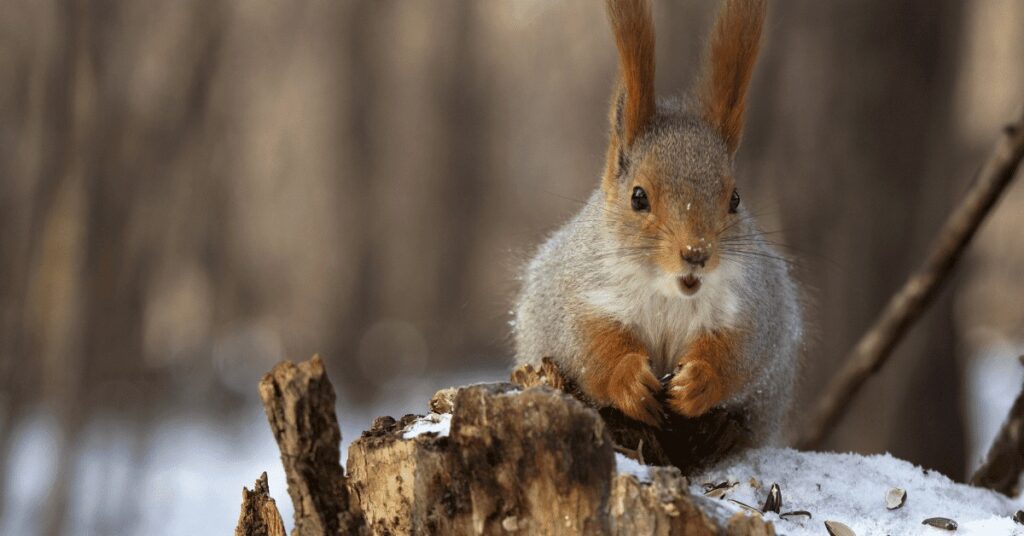
Important F.A.Q.s
Can you fly a drone in a wildlife management area?
It’s essential to check with the managing agency and review any rules or restrictions before flying a drone in a wildlife management area.
What are some potential risks of flying a drone in a wildlife management area?
This can negatively impact breeding, feeding, and other vital behaviors. In addition, drones can also potentially cause collisions with wildlife, damaging or injuring them.
How can drone pilots minimize disturbance to wildlife in a wildlife management area?
It’s essential to remain aware of wildlife behavior and to discontinue flights if any signs of disturbance are observed.
What are some best practices for flying drones in wildlife management areas?
What are the potential consequences of violating drone regulations in a wildlife management area?
It’s essential to follow all rules and guidelines to ensure nature’s and the environment’s safety.

Final Thoughts
It is not recommended to fly a drone in a wildlife management area. There is wildlife that wants peace. Humans have their territories, so if you interfere in the wildlife areas, something terrible can happen to nature.
If you have any other questions about the question: Can you fly a drone in the wildlife management area? Then you can ask in the comment box below. You are more than welcome if you want to say something to me.
What did you get from this article?
Can You Bring a Drone to Thailand?
“Planning a trip to Thailand? Find out if you can bring your drone along. Don’t miss this essential info for capturing stunning aerial views of Thailand’s beauty!”






